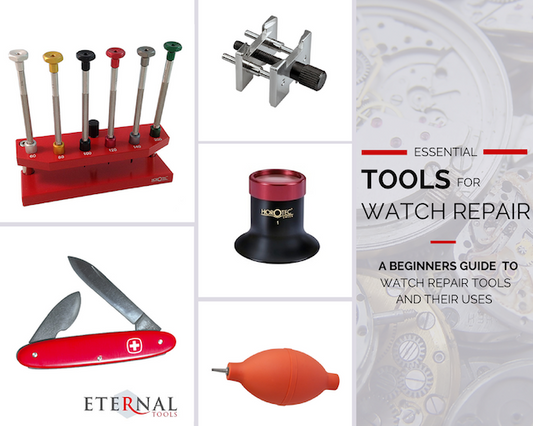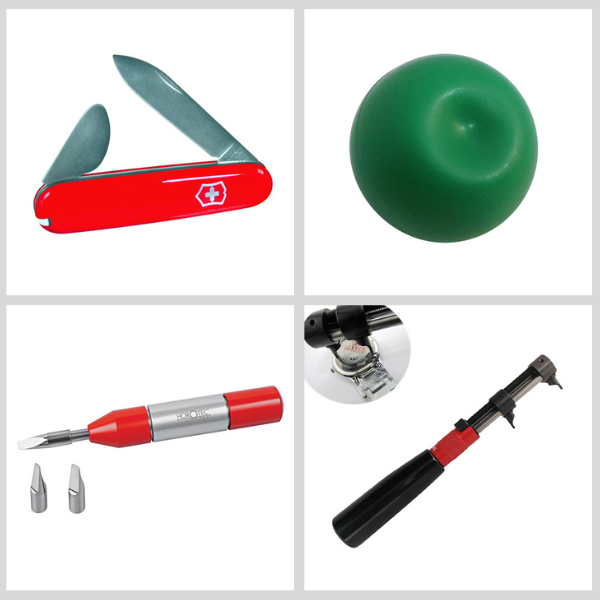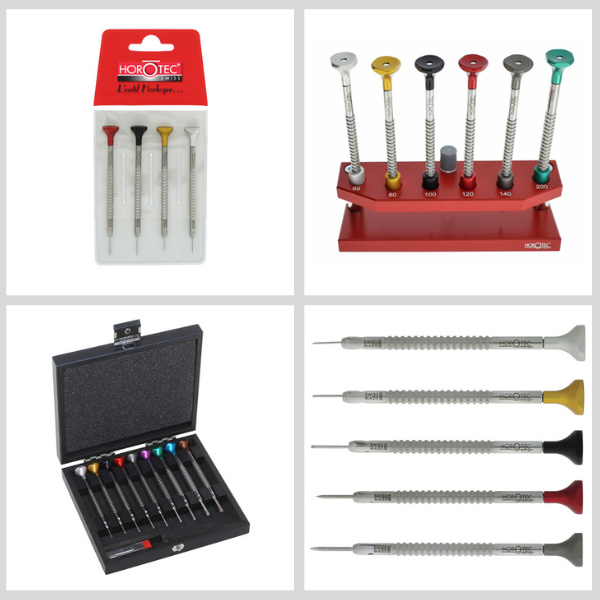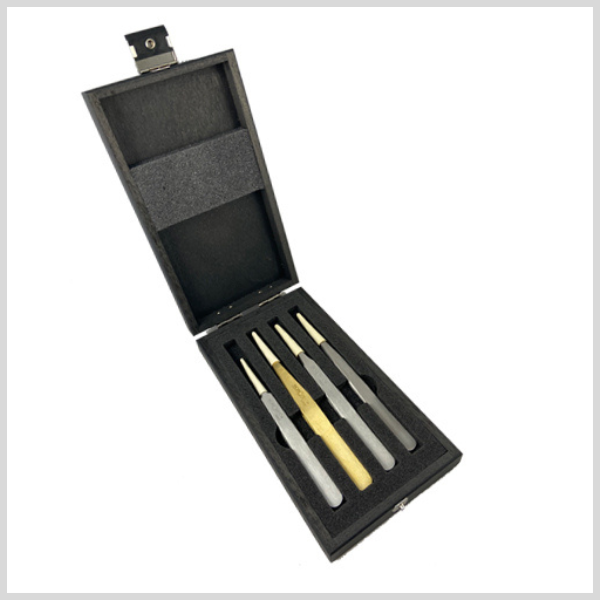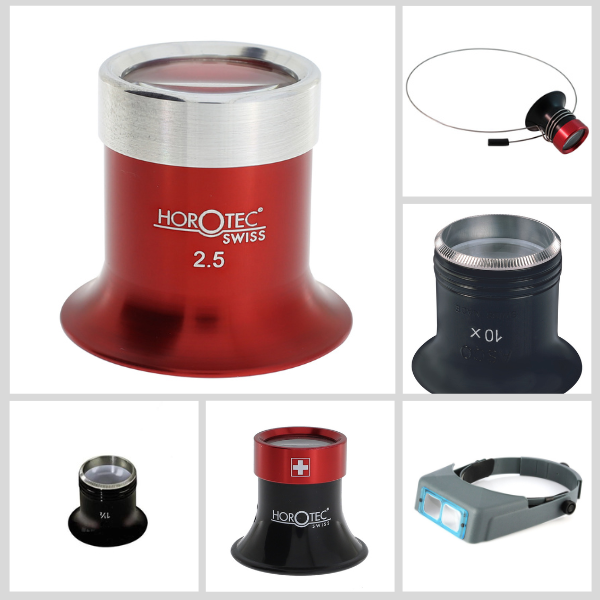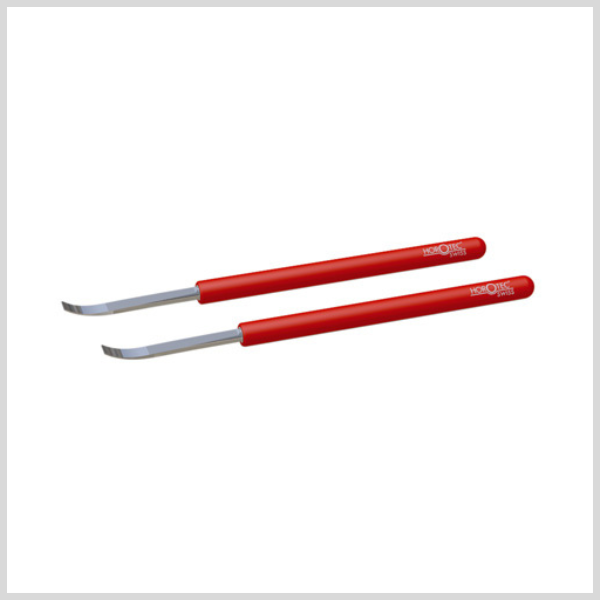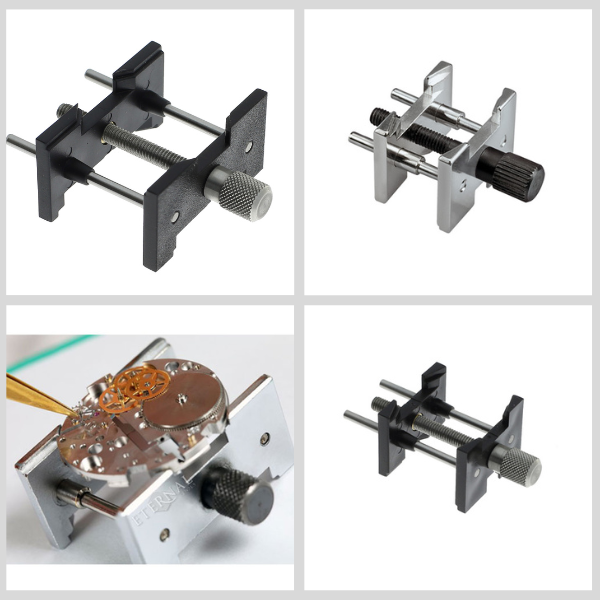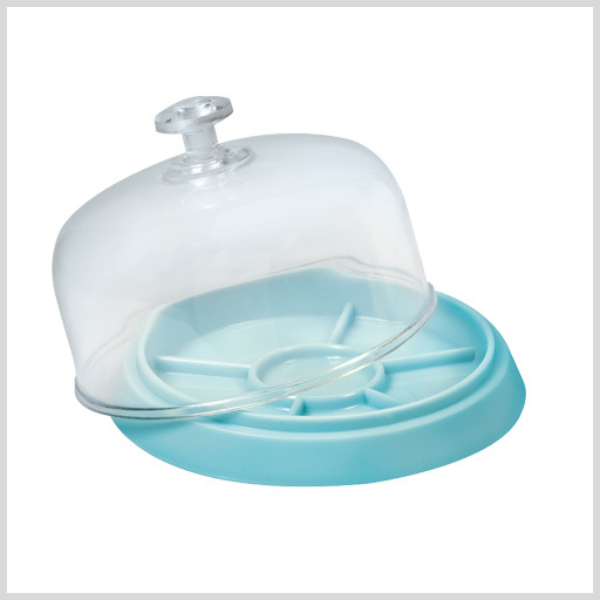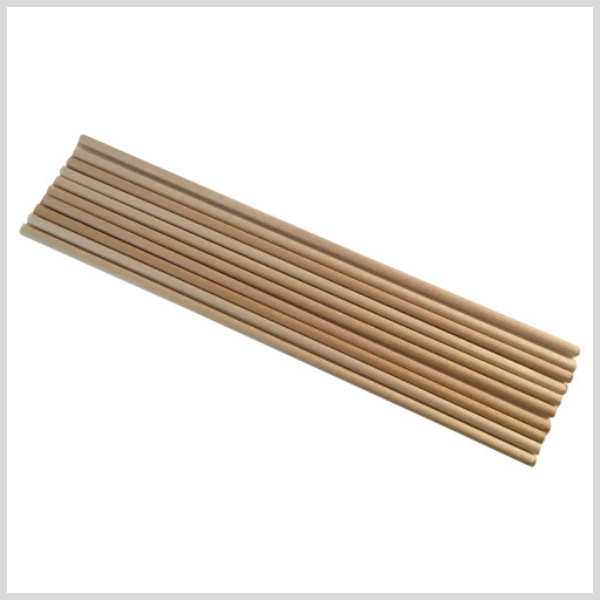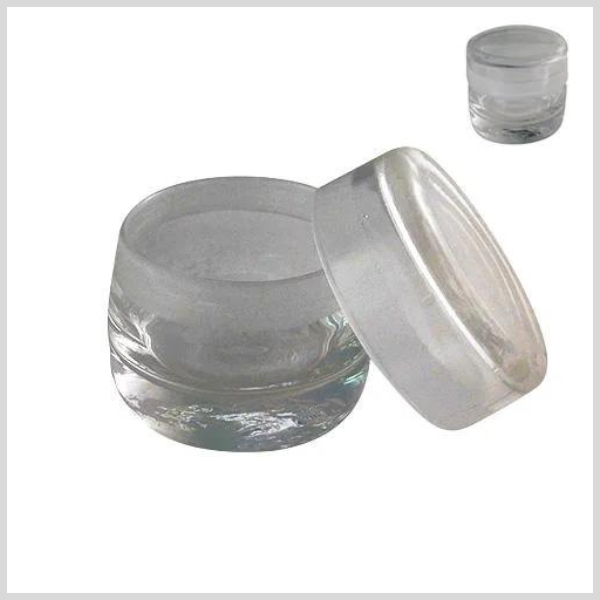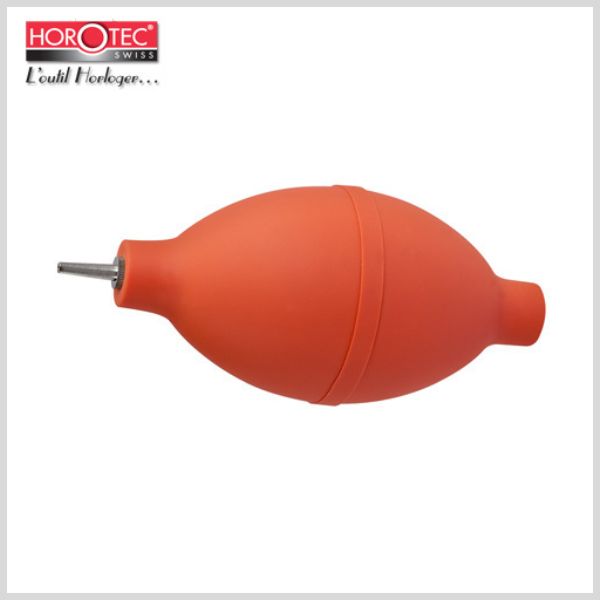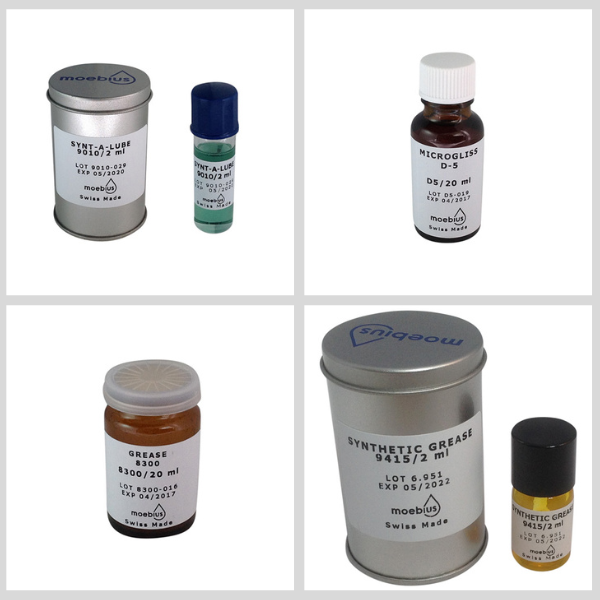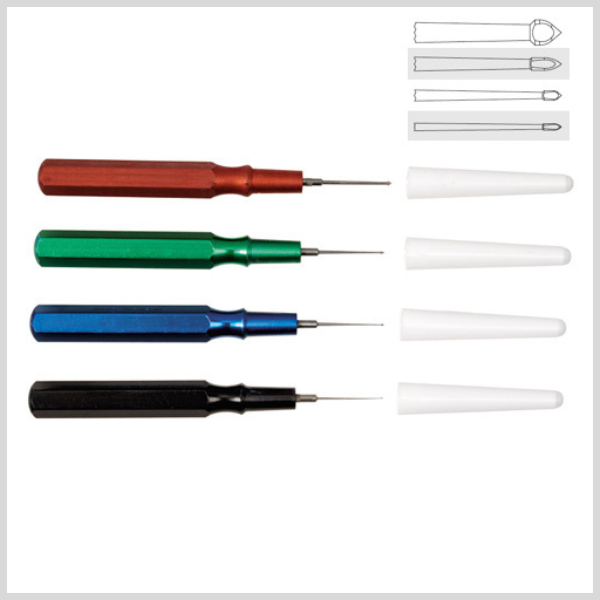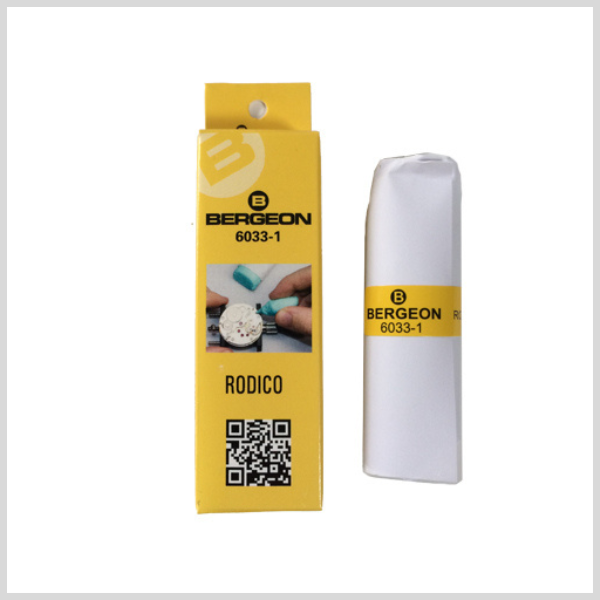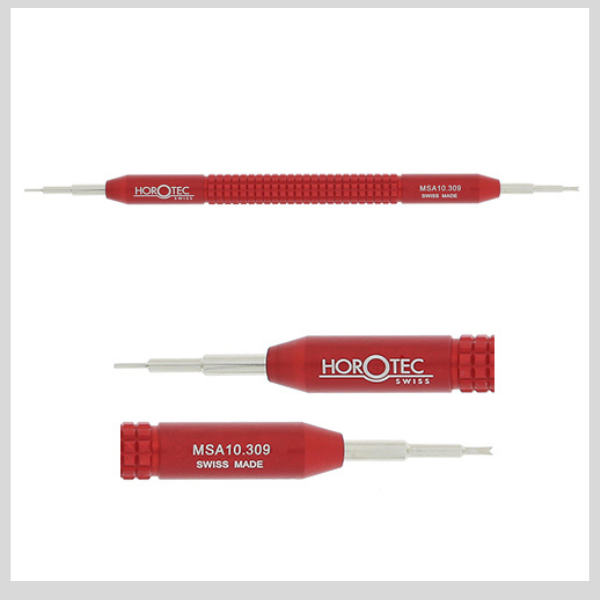Getting Started with Watch Repair: Essential Tools for Beginners
Watchmaking and home watch repair are rewarding and fascinating hobbies, but with such a huge range of tools available, it’s easy to feel overwhelmed when starting out.
To help you avoid confusion (and unnecessary spending), I’ve listed 12 essential watch tools that every aspiring horologist should consider for their basic repair kit.
Watchmaking and home watch repair are fascinating hobbies, but with so many tools available, it’s easy to feel overwhelmed when building your first kit. Whether you're just getting started or want to upgrade your setup, here's a list of 12 essential watch repair tools every beginner should consider.
1. Watch Case Opener: First Step in Any Watch Repair
Before you can diagnose an issue or carry out a service, you'll need to remove the front or back of the watch. The right case opener tool is essential for gaining safe access to the movement without causing damage.
Depending on the type of watch, you may need to screw off the back or lever off the case back using a specific tool.
Screw-back watches require a case wrench like the adjustable Jaxa tool or a manufacturer-specific tool such as the Horotec screw back removal tool.
Snap-on cases are best opened with a case opener knife that slots under the edge and twists to lift the case back cleanly.
Some knives are double-ended, with a sharp blade on one side and a case opener on the other, great for sharpening Pegwood as well as opening cases.
Before you can examine a watch to determine what may be causing a problem or undertake a regular service, you need to remove the back and/or front of the watch.
Depending on the type of watch, you may need to screw off the back, or lever off the back and front of the watch.
Screwback watches require special tools like an adjustable Jaxa tool or a case wrench, or the watch manufacturer's own Horotec screw back removal tool.
2. Precision Screwdrivers: Essential for Every Watch Repair Toolkit
Once the case back is removed, you'll need to detach the movement by removing the stem and case screws. This is where a good-quality set of watchmakers screwdrivers becomes vital.
Investing in a precision set from a trusted Swiss brand, such as Horotec or Bergeon—will pay off in the long run. Unlike cheaper versions, quality screwdrivers protect delicate screws from damage and offer better grip and control.
In most basic repairs, you'll rely on just four sizes:
- Grey – 1.40mm
- Red – 1.20mm
- Black – 1.00mm
- Yellow – 0.80mm
These screwdrivers typically have ball-bearing swivel heads and come with replaceable blades. They can also be resharpened using a dressing stone and jig to extend their life.
There are long debates as to which are the best, In my opinion, the Horotec quality has a slight edge.
3. Fine Tweezers: For Handling Delicate Watch Parts
Once you remove screws or small components, you’ll need a pair of fine tweezers to lift and move them safely into a watch parts storage container . Watchmakers’ tweezers are highly precise and essential for almost every step of the repair process.
Unlike cosmetic tweezers, these are designed with perfectly aligned tips to grip tiny screws, jewels, and springs without slipping or scratching.
As a starting point, most watchmakers recommend the following:
- No. 2 - Strong with fine, flat tips
- No. 3 - Fine tips
- No. 5 - Extra-fine tips for hairsprings
- Brass AM - Non-marking, ideal for sensitive parts
- Plastic - Useful for working on quartz movements
Non-magnetic tweezers are a smart choice, they help prevent tiny screws from sticking during repair.
Brands like Horotec, Bergeon, and Dumont, are well-regarded for precision and build quality. Hold them like a pen, and with practice, you'll be able to rotate them 360° while gripping small parts securely.
4. Eyeglass or Eye Loupe
You don't need me to tell you that watch parts and watch screws are very small. To ensure you can see what you are doing, add an eyeglass or eye loupes to your watch repair kit.
Like most watch tools, eyeglasses come in many shapes and sizes. No need to panic, you will only really need 2 types:
- General Eyeglasses (3 - 4 times magnification)
- Inspection Eyeglass (10 - 12 times magnification)
Your general eyeglasses are used most of the time for dismantling and reassembling your watch. The inspection eyeglasses are only used periodically to examine pivots, and jewels more closely.
Like a few of the other tools I would not buy a cheap eyeglass, when it comes to looking after your eyesight I would make a reasonable investment here, both Bergeon and Horotec make excellent eyeglasses.
Good-quality eyeglasses are numbered, e.g., No. 1, No. 2.5, etc. This number corresponds to the focal length, so a No. 1 means you would focus 1 inch from the object, and a No. 2.5 would be 2.5 inches from the object. The closer you are to the object, the greater the eyestrain, so it is best to work at a good distance for as much time as possible.
If you struggle to hold the eyeglass in place then you may want to consider a wire eyeglass holder. I find these very easy to use and it prevents you from accidentally dropping your eyeglass onto your work and it acts as a great holder around your neck between jobs too.
5. Watch Hand Lifting Levers
To remove the dial from your watch, you will need to remove the hands first, so add some watch hand lifting levers to your watch repair kit, too.
Two tools, Hand Lifting Levers and the Presto Automatic Hand Lifting Tool, can accomplish this task for you.
When removing the hands, you need to be cautious of damaging the dial and/or the hands. The hands need to be removed vertically, and the Hand-Lifting Levers do this beautifully by rocking on their angles to drive the hands upwards.
It is common practice to use a dial protector or thin plastic Sealy bag on top of the dial to avoid damaging it.
The Presto hand removing tool can work well but you need to be careful of the small plastic feet that come down and push onto the dial face. I have seen these feet mark dials when not used with proper care.
Hand Lifting Levers come in various sizes to cater for different-sized hands.
Again, be careful of cheap tools here as the finish is often not good and can damage your watch dial or the hands when used.
6. Movement Holder
Once you have removed the watch movement from its case, it is not recommended that you touch the movement with your fingers, a movement holder is used to safely secure the movement for working on.
Movement holders come in lots of shapes and sizes but the standard holder is reversible so it can cater for different sized movements, smaller ones on one side and larger ones on the other.
Again Horotec and Bergeon make excellent movement holders.
Some speciality-branded watches have their own movement holders, so look out for lots of other weird and wonderful shapes, including ones made from bamboo. Either way, a movement holder should be part of your watch repair kit.
7. Parts Container
When I first started watch repair I didn't use a dedicated parts container, but now I can really see the benefit of using one.
Part containers enable you to separate the various parts of the watch as you disassemble and reassemble the parts. But more importantly, they should have a cover that prevents dust or debris from landing on the watch parts or small items after they have been removed and cleaned.
These you can pick up fairly cheaply and there is no need to overspend on a parts container. These are not essential for your watch repair kit but they can make life a heck of a lot easier.
8. Pegwood
Peg wood is made from a hard wood and is very consistent in size and shape. Many people try to compromise and use toothpicks or wooden kebab sticks but these are too soft and don't hold their form, so add some Pegwood to your watch repair kit. It's a simple tool, but a special tool.
Pegwood is used for a number of tasks within the watch repair trade, but its two main uses are for cleaning out jewel holes and watch parts before cleaning the watch with chemicals, and for holding down parts and springs during assembly and reassembly.
You will also need a sharp knife to dress the end of the pegwood, the two most common shapes will be a point and a flat.
9. Glass Benzine Jar and Watch Degreasing Fluid
Once your watch has been stripped down and all the jewel holes cleaned with peg wood then you will need to clean the watch with a watch cleaner.
Watch repair professionals will use a watch cleaning machine that may be ultrasonic to remove all the dried oil, dirt and grime from the watch parts.
However, watch cleaning machines are very expensive so the beginner can do this by hand with a benzine jar and some cleaning fluid. Benzine is no longer used as a cleaning fluid, but a degreasing fluid such as Renata Essence will work.
Even if you purchase a watch cleaning machine, a glass benzine jar with a degreasing fluid is always useful for quickly removing grease should an oiling job go wrong, or watch parts get recontaminated. Add one to your watch repair kit.
Ensure your benzine jar has a tight-fitting lid to avoid evaporation of your fluid. You may also like to invest in a small paintbrush to use with your benzine jar to help clean your watch parts once in the fluid.
10. Rubber Dust Blower
As you probably know dust and dirt are the worst enemy of a watch and its small parts. You should never blow on a watch with your mouth because your mouth contains moisture and contaminants that will only make the functioning of your watch worse. Therefore we highly recommend you add a quality dust blower to your watch repair kit.
Rubber dust blowers are inexpensive and excellent for quickly removing dust and dirt from your watch as well as drying parts after cleaning.
So once you have cleaned a watch part in your benzine jar you would then place it onto a piece of paper. Holding the watch part with your tweezers you can then blow dry the watch part with your dust blower.
Take care when drying watch parts with a blower because dust blowers can be very powerful and if the watch part is not held tightly it can be blown away, never to be seen again!
11. Watch Oils and Greases, Oilers and Oil Pots
Having cleaned all your watch parts it is time to reassemble the watch. As you reassemble the watch you will need to add oil and grease to all the areas in the watch where there is friction, so add this to your watch repair kit.
There is a vast array of oils and greases on the market, but most professional watch repairers agree that Moebius make some of the best.
Here are 4 that I can recommend:
- Moebius 9010 Oil - for balance staff pivots, escape wheel pivots (quick moving with low torque)
- Moebius Oil D5 (HP1300) - barrel arbor, centre wheel (slow moving with high torque)
- Moebius 8300 Grease - hand setting, winding mechanism, canon pinion (friction-based)
- Moebius 9415 Grease - high-speed escapements over 21,600 vibs / hour
All of the oils and greases should be kept in oil pots. You can either purchase a single pot for each oil/grease or a stand that has three or four pots together. All the oil pots should have lids to prevent them from becoming contaminated.
So, now you have your Moebius oil and grease, but you need a way to get it from your oil pots and onto your watch parts. For this job, you will require a watch oiler.
Watch oilers consist of a coloured handle with a metal stem and a "spade-shaped" design on the end. There are generally 4 different sizes:
- Red - large tip
- Green - medium tip
- Blue - fine tip
- Black - very fine tip
You simply dip the oiler into your oil in an oil cup and then touch it onto the watch part and the oil transfers onto the watch. Holding the oiler vertically will enable the oil to slide down and into small crevasses.
You are always better off using a finer tip than a larger tip because small amounts of oil can easily be added, but excess oil would require the watch part to be removed, cleaned, dried and reassembled.
A piece of pith wood is also useful for cleaning your oiler between each oil. Rodico, (see below) is also useful for this purpose.
12. Rodico Cleaning Putty
I don't know many watch repair professionals who don't use Rodico so this is a great and inexpensive item to add to your watch repair kit.
Rodico is a cleaning putty that has thousands of uses but it's mostly used for removing fingerprints, oil, dirt and grime from your watch movement.
Rodico works just like a pencil eraser simply wipe or dab it onto your watch movement to discover its benefits. Another great use for this wonderful putty is for lifting out hard to grab jewels or screws from your movement.
Once your Rodico gets dirty, simply spread it between your fingers and it'll be as good as new.
Very inexpensive and very useful.
Optional Extra: Spring Bar Tool
Every professional watchmaker will have a high-quallity spring bar remover in their repertoire of tools.
These tools are designed for removing watch spring bars from watch straps, watch bands, and watch bracelets.
Different tools have varying designs, but essentially they all do the same job, it will just come down to the right tool for you.
They often have stainless steel tips, one with a fine forked tip for removing spring bars from a watch strap and the other a pin pusher end for replacing the pins in a watch strap.
Further down the line, but not essential for setting up your beginner's watchmaker kit, would be purchasing some bracelet pins and a block watch case holder or bracelet holding vice.
Pin punch tools will provide you with a pin vice type handle and spare pins for removing friction pins from your watch bracelets, and the block will hold the bracelet in place while you work on it.
Final Thoughts
Watch tool kits are readily available for the watch lover who wishes to dabble in the repair and servicing of their own watches with a ready-to-go kit.
Be aware that these kits often contain low quality, but very affordable items, and that the best watch repair kits are those that you make up yourself, where you have chosen each item wisely and to your own budget.
Watch tools do not need to cost the earth, but remember that excellent quality does have a price and for a very good reason.

